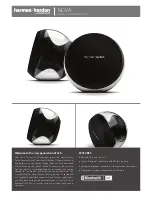
- 9 -
A7. FALSE ALARMS:
Carbon monoxide alarms respond to the presence of CO. They do not detect smoke.
If the CO alarm sounds, follow instructions 1 to 4 under WARNING in section A2… If alarm
signal sounds….
Some solvents used in chemical cleaning agents, paints, varnishes and the furniture
refinishing process, and some propellants used in aerosol hair spray and air fresheners
can cause the CO alarm to alarm if they are used in close proximity to the alarm for
extended periods of time. Gasoline or other flammable liquids stored in open containers
near the alarm may also cause the CO alarm to alarm.
Never store flammable liquids in
open containers.
IF YOU HAVE BEEN AWAY FROM HOME and you return to find your alarms
sounding, DO NOT ENTER YOUR HOME. Call the Fire Department from a neighbor's
home.
DO NOT RE-ENTER YOUR HOME FOR ANY REASON UNTIL YOU HAVE
BEEN ASSURED THAT IT IS SAFE TO DO SO.
IMPORTANT:
A newly installed alarm may have absorbed various fumes or gases
during transit and storage. This accumulation contamination can cause the alarm to go
into the alarm mode during the initial power up. You can choose to do nothing and the
alarm will stop sounding in a few minutes or you can press the Test / Reset button to stop
the alarm. It may be necessary to repeat this procedure several times to clear the sensor
of the accumulated contamination.
During this initial startup period the alarm may not
accurately detect the presence of potentially dangerous gas.
A8. MAINTENANCE :
CLEANING YOUR ALARM
You can clean your alarm by using a vacuum cleaner hose and vacuuming around
the openings on the alarm. The outside of the alarm can be wiped with a damp cloth.
AFTER CLEANING, TEST YOUR ALARM BY USING THE TEST BUTTON AND CHECK
THAT THE GREEN LED IS ON.
A9. LIMITATIONS OF CARBON MONOXIDE ALARMS
Carbon monoxide alarms are devices that can provide an early warning of the
presence of CO gas at a reasonable cost. However alarms have sensing limitations and
may not always sound a warning of the presence of CO. A.C. powered alarms will not
operate if the A.C. power has been cut off, such as by an electrical fire, a tripped circuit
breaker or an open fuse. CO alarms must be tested regularly to make sure that they are
receiving power and operating properly. Carbon monoxide alarms cannot sense CO that
does not reach the alarm and therefore CO alarms may not detect CO which is in a
different area of a home. Furthermore if the alarm is located on a different level of the
home or on the other side of a closed door it may not waken a sound sleeper. The use of
drugs and alcohol may impair ones ability to hear the alarm. If you have a multi-level
home, install CO alarms on each level of the home. If the alarm is installed in a hallway
and the bedroom doors are kept closed at night, install a CO alarm in each bedroom.
Although CO alarms can help save lives by providing an early warning to the
presence of carbon monoxide, they are not a substitute for an insurance policy.
Homeowners and renters should have adequate insurance to protect their lives and
property.


































